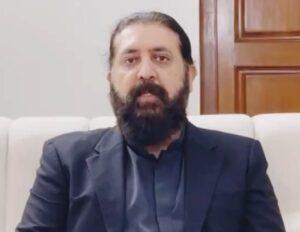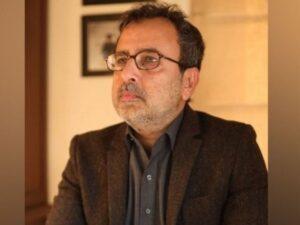Posted on July 13, 2025
Mardan:
At the top in the hills of the village of Sawaldher of the District of Mardan, Khyber Pakhtunkhwa (KP) are the experienced remains of the 2000 -year -old Buddhist archaeological site and which is formerly springing from the ancient civilization of Gandhara. He once served as a teaching establishment and spiritual complex of Buddhism for about 550 years during the Kushan dynasty. Although rich in history and cultural meaning, Thareli remains today on the fringes of the conscience of the public and the attention of the government. With narrow access roads, minimum installations and a limited promotion, the potential of the site as a religious tourist destination remains unexploited, despite its position as the third Buddhist site in the district of Mardan.
Located about nineteen kilometers from Mardan City on a hill about 300 meters high, the site has kept stupas and chapels where Buddha sculptures were placed for worship, as well as a high altitude residential area in the mountains.
“After the Buddhist remains of Takht Bhai and Jamal Gahri, Thareli is the third historic site of the Mardan district,” shares Dr. Ghayur Shahab, member of the Faculty of the Archeology Department of the University of Malakand, then head of the Museum of Mardan. “It was built during the Kushan period, from the 1st century BC in the 5th century AD. After its construction, the site remained active for 550 years. The decline of Buddhism began when the state has stopped supporting it. With the arrival of Huns and later Muslims, Buddhism ended in this region. ”
According to the direction of archeology and museums of KP, the complex was discovered for the first time in the 18th century, then from 1964 to 1967, a Japanese archaeological mission began the excavations of the site and discovered the main stupa next to a spring, surrounded by several voting stupas, the districts of the students, the cells of the monks, the rooms of the assembly and the chapel.
Built with masonry layers, the main stupa included niches that housed Buddhist sculptures. The site has extended to several terraced spurs with evidence of several floors.
“This site was a religious seminar where Buddhism was taught, studied and practiced,” shares Dr. Shahab. “The excavated antiquities of the site include Buddhist panels revealing the life stories of the Buddha, sculptures, stucco sculptures and pieces. 1752387700 Presented in Peshawar and Lahore museums. »»
Junaid Khan, a local resident in the region, said that, like other historic KP sites, the Thareli Buddhist complex is appropriate and relevant to religious tourism.
“However, unfortunately, only tourists from neighboring villages visit the site,” he adds. “The provincial government of Pakistan Tehreek Insaf (PTI) has so far failed to keep its promises concerning the promotion of religious tourism in religion. A major obstacle in the promotion of the a thousand year old historic complex is the road leading to the archaeological site, which is narrow and dilapidated.
According to Khan, initially, the site was under the jurisdiction of the federal government. In 2010, it was given to the Provincial Directorate of Archeology and, in 2013, the KP government protected it under the Antiquity Act and carried out conservation and catering work.
“In 2023, the High Court of Peshawar, in a verdict, prohibited crushing plants, mining and dynamics less than a kilometer from the site,” revealed management officials.
“For the promotion of religious tourism, we must attract foreigners from Buddhist countries to visit these sites,” shares Bakhat Muhammad, deputy director of the Directorate of Archeology and Museums, KP.
He added that the Thareli archaeological complex is important for religious tourism, but due to security problems, local police do not allow foreigners to visit this monastic complex and Jamal Garhi’s site. Consequently, they only visit the Takht Bhai monastic complex which has a negative impact on tourism.
“The site spreads more than 253 kanals in a mountainous area,” shares the deputy director. “Currently, no entry fees is collected and the site is not officially open to visitors.”
With regard to other excavations and development, Bakhat Muhammad said that a two -year project for eight historic sites, including the Thareli complex, has been approved, adding that as part of the project, excavation, conservation and development will be carried out before the site opened for local and foreign visitors with appropriate facilities.
The ruined chapels of Thareli, the Seaire Stupas and the scattered sculptures represent more than historical artifacts – these are fragments of a pluralist and intellectual past that has once defined the region. However, despite its deep archaeological and spiritual significance, the site lies in negligence, overshadowed by more accessible or popular monuments like Takht Bhai. With renewed efforts in excavation, conservation and infrastructure, Thareli could emerge not only as a key node in the Gandharan heritage path, but also as a source of cultural diplomacy and economic opportunity by religious tourism. For this to happen, however, preservation must respond to promotion – and history must have a second life.
Razzaq is a radio and printed journalist based in Peshawar. Il tweete @theabdurrazzaq
All the facts and information are the sole responsibility of the writer




